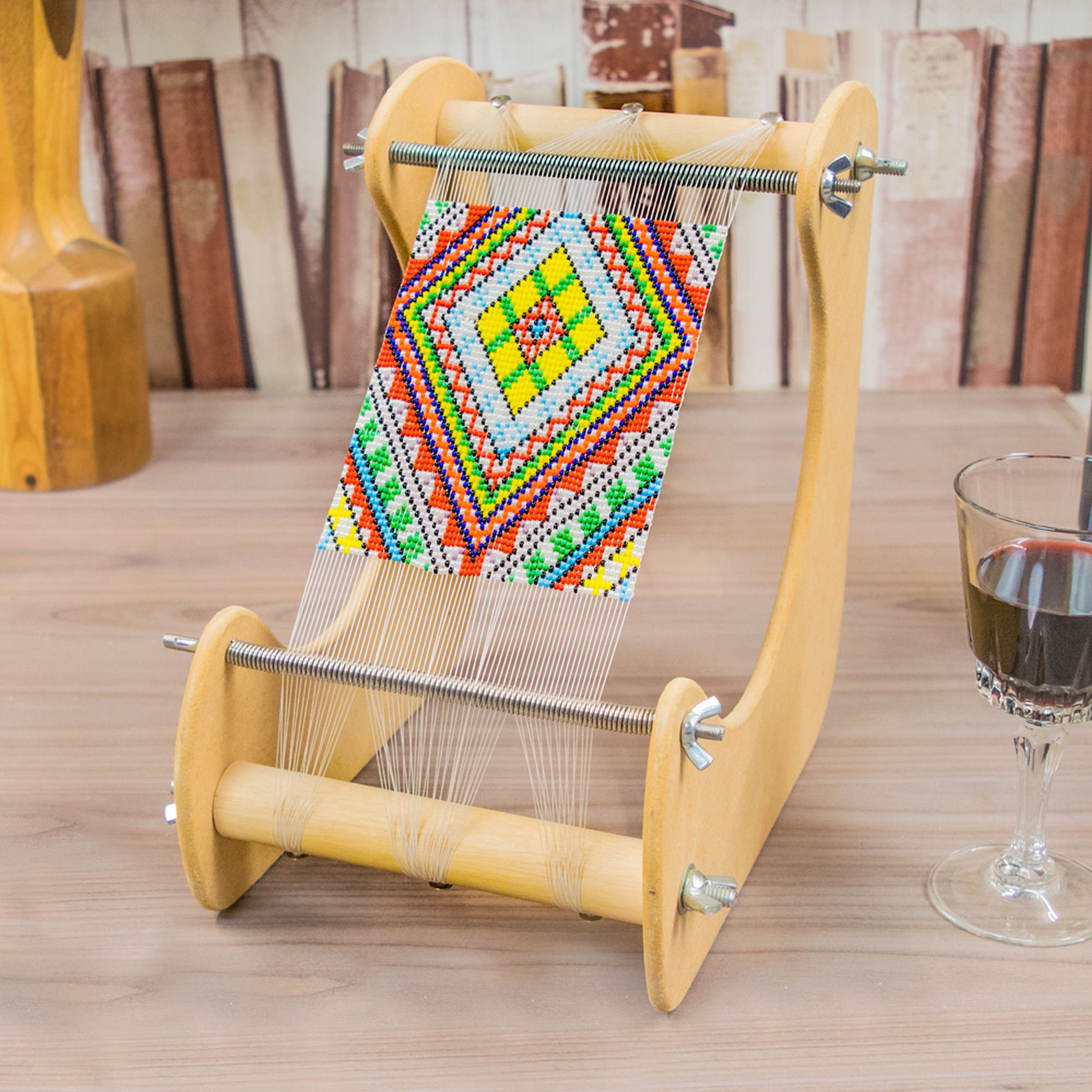Introduction to Beading Looms
The Art of Beaded Weaving
Beading looms have long been cherished tools for creating intricate, beautiful beadwork. Understanding the art of beaded weaving with looms helps us appreciate this meticulous craft. Unlike freehand beading techniques, loom beading involves using a loom to hold threads securely in place, allowing the creation of intricate patterns with precision.
Beading looms offer many creative possibilities, enabling artisans to produce detailed designs ranging from simple bracelets to elaborate tapestries. The structured nature of loom beading ensures uniformity, making it easier to replicate complex patterns consistently. This aspect is particularly appealing to those who value precision and symmetry in their work.
Moreover, the rhythmic process of weaving beads onto the warp threads can be meditative and highly satisfying. The steady repetition of threading beads, row by row, fosters a sense of calm and focus. Understanding the meditative benefits of this craft underscores its appeal as both an artistic and therapeutic practice.
Engaging in loom beadwork connects artisans to a rich tradition, with roots in various cultures worldwide. Indigenous communities, especially in North America, have historically used beading looms to create meaningful and symbolic designs. Modern crafters continue to draw inspiration from these traditional patterns while also exploring contemporary motifs. Understanding the cultural heritage of beaded weaving adds depth to this beloved craft, highlighting its timeless and universal appeal. Whether for relaxation or artistic expression, beading looms offer a fulfilling and enriching experience for crafters of all skill levels.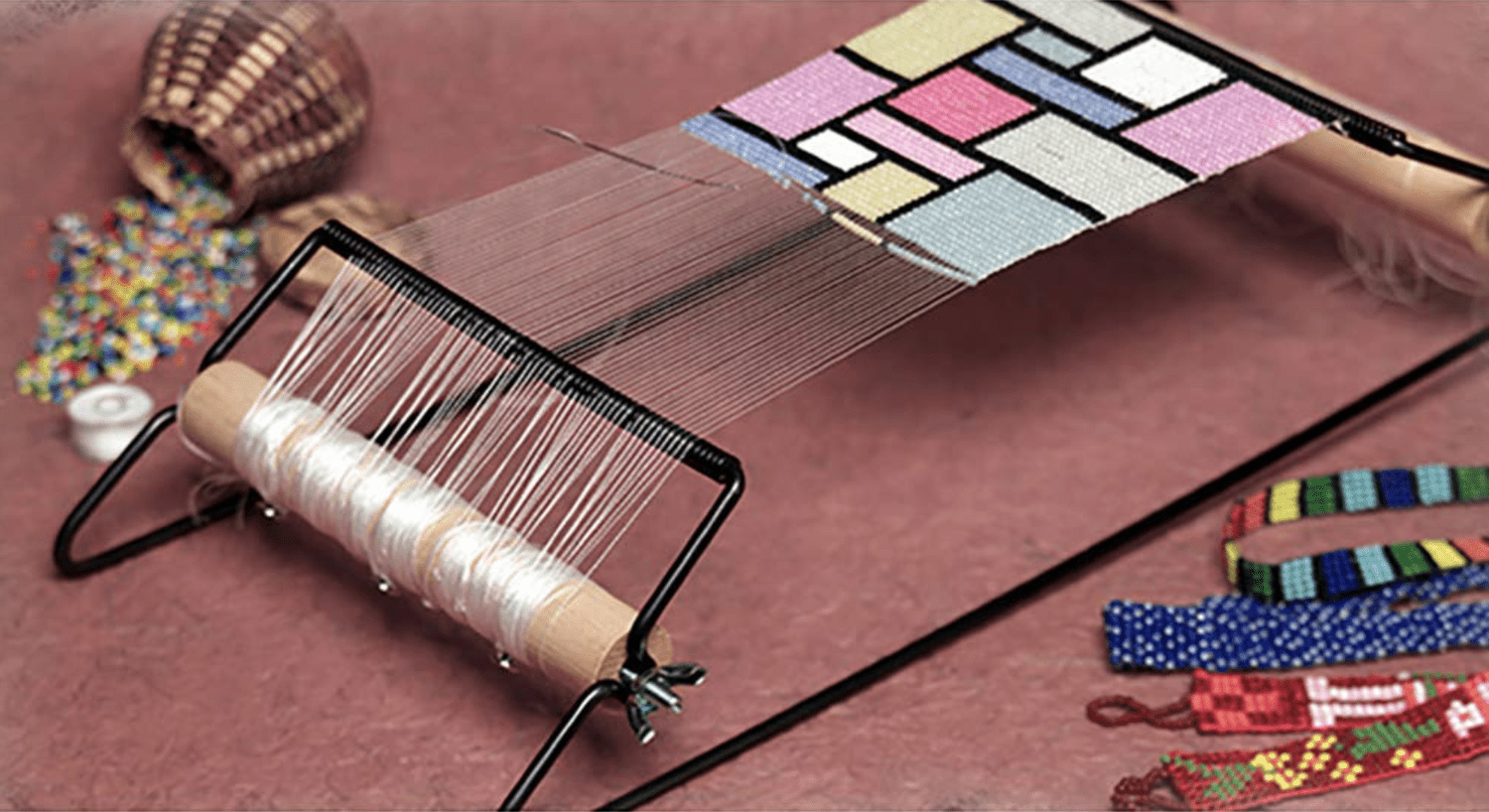
Types of Beading Looms
Simple Frame Looms
Simple frame looms are beginner-friendly and provide an excellent introduction to the world of loom beading. Understanding their design and functionality helps us appreciate their accessibility and ease of use. These looms consist of a basic rectangular frame, usually made of wood or plastic, with pegs or notches at each end to hold the warp threads in place.
One of the primary advantages of simple frame looms is their affordability and straightforward setup. They are ideal for small to medium-sized projects, such as bracelets, bookmarks, and pendants. The uncomplicated design allows beginners to focus on learning the basic techniques without being overwhelmed by complex mechanisms.
To set up a simple frame loom, begin by attaching the warp threads to the pegs or notches, ensuring they are evenly spaced and taut. The warp threads serve as the foundation for threading beads row by row. The straightforward nature of these looms makes it easy to correct mistakes and adjust tension as needed.
Understanding the benefits of simple frame looms highlights their value as introductory tools for those new to beading. By providing a clear and accessible platform, these looms help build foundational skills and confidence in learners. As proficiency grows, crafters can explore more intricate designs and techniques, gradually expanding their repertoire and moving on to more advanced looms.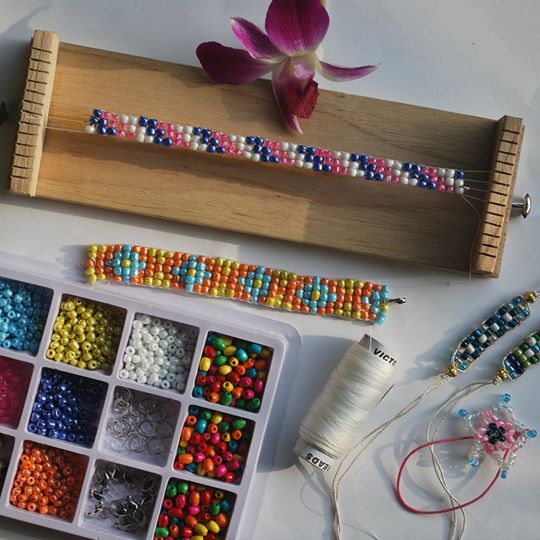
Adjustable Looms
Adjustable looms offer greater versatility and control, making them popular choices for more experienced beaders. Understanding the features and advantages of adjustable looms helps artisans create a wide range of intricate projects. These looms typically include moveable components that allow for adjustments in length, width, and tension, accommodating different project sizes and complexities.
One of the primary benefits of adjustable looms is their flexibility in handling larger and more detailed designs. The ability to modify the loom’s dimensions means that artisans can create anything from narrow bracelets to wide tapestries without needing multiple looms. This adaptability is particularly useful for ambitious projects that require continuous beading over extended lengths.
To set up an adjustable loom, begin by configuring the frame to the desired dimensions, securing the adjustable components in place. Next, warp the loom by threading the warp threads through the notches or pegs, adjusting the tension to achieve an even and consistent setup. This flexibility ensures that the warp threads align perfectly with the beads, maintaining the integrity of the design.
Understanding the versatility of adjustable looms reveals their potential for expanding creative possibilities. By offering the ability to customize dimensions and tension, these looms provide a flexible and adaptable platform for intricate and large-scale projects. This adaptability makes adjustable looms valuable tools for experienced beaders, enabling them to tackle complex and detailed designs with ease and precision.
Electric Beading Looms
Electric beading looms represent the pinnacle of advanced beading technology, offering significant enhancements in speed and efficiency. Understanding the distinctive features of electric looms helps us appreciate their appeal to serious beadwork enthusiasts and professionals. These looms incorporate motorized systems that automate the weaving process, reducing the time and effort required for large and complex projects.
One of the key advantages of electric beading looms is their ability to produce consistent and precise results quickly. By automating the repetitive aspects of beading, such as moving warp threads up and down, these looms allow artisans to focus more on the creative aspects of their designs. The motorized system ensures uniform tension and alignment, minimizing errors and improving overall quality.
To set up an electric beading loom, start by threading the loom with warp threads, similar to manual looms. Next, program the loom according to the desired pattern, adjusting settings such as speed and tension. As the loom operates, monitor the process to ensure accuracy and to make any necessary adjustments.
Understanding the benefits of electric beading looms highlights their capacity to enhance productivity and precision in beadwork. While these looms represent a significant investment, their ability to streamline the beading process and produce high-quality results makes them invaluable tools for serious artisans and professionals. Electric beading looms empower beaders to tackle ambitious projects with efficiency and accuracy, pushing the boundaries of what is possible in this intricate craft.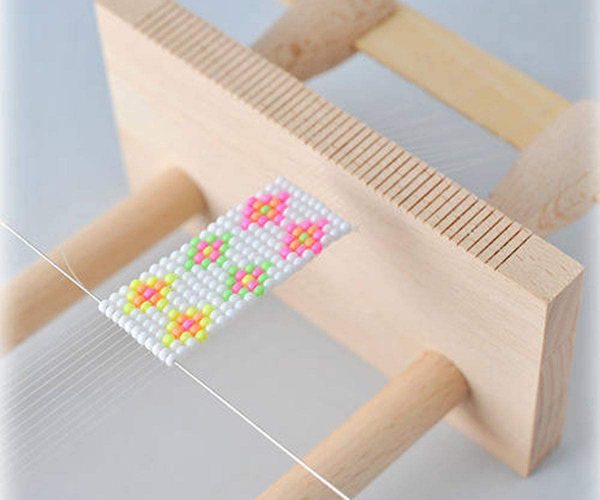
Setting Up and Using a Beading Loom
Preparing the Workspace
Preparing the workspace is a crucial step for a successful beading project. Understanding the importance of an organized and comfortable workspace ensures a smooth and enjoyable beading experience. Begin by selecting a well-lit and clutter-free area to set up your beading loom. Adequate lighting is essential for seeing the small beads clearly and preventing eye strain during extended beading sessions.
Gather all necessary materials and tools, including beads, thread, needles, scissors, and pattern guides. Arrange these items within easy reach to streamline the beading process and avoid unnecessary interruptions. Using storage solutions such as bead organizers and trays helps keep your materials sorted and accessible.
Set up your loom on a stable surface to prevent any movement during the beading process. Ensuring stability is crucial for maintaining even tension and alignment in the beadwork. If using an adjustable or electric loom, take the time to configure it to the desired dimensions and settings.
Understanding the importance of preparing your workspace highlights its impact on the quality and efficiency of your beading project. A well-organized and comfortable environment fosters focus and creativity, allowing you to fully immerse yourself in the intricate craft of loom beading.
Warping the Loom
Warping the loom is a foundational step that sets the stage for the beading process. Understanding the proper technique for warping ensures a strong and stable base for your beadwork. Begin by securing the warp threads to the loom’s anchor points, ensuring they are evenly spaced according to the pattern’s requirements. The number of warp threads needed depends on the width of the design and the size of the beads used.
Thread the warp threads vertically through the loom, securing each end to the corresponding notches or pegs. Maintain even tension throughout this process, ensuring that the threads are taut and parallel. Uneven or loose warp threads can lead to misaligned beads and an unstable structure.
For adjustable looms, make any necessary adjustments to the frame’s dimensions and tension settings to achieve a precise setup. If using an electric loom, program the motor to maintain the desired tension and thread movement. Proper warping is essential for the structural integrity and accuracy of the beadwork.
Understanding the process of warping the loom emphasizes its importance in creating a successful and visually appealing design. By establishing a strong and even foundation, artisans can ensure that their beadwork remains consistent and aligned throughout the project.
Weaving and Finishing
Weaving and finishing are the culmination of the beading process, transforming warp threads and beads into intricate designs. Understanding the steps involved in weaving and finishing ensures a polished and professional result. Begin by threading a needle with beading thread and tying a secure knot at the end. String the first row of beads according to the pattern, ensuring an even and cohesive look.
Slide the threaded needle with beads under the warp threads, positioning the beads between the threads as per the pattern. Gently push the beads up so that they sit on top of the warp threads, holding them in place with one hand. Guide the needle back through the beads, this time over the warp threads, to secure the beads in place.
Continue weaving beads row by row, following the pattern meticulously. Pay attention to the thread tension, maintaining consistency to avoid gaps or unevenness in the beadwork. Regularly check the alignment and placement of the beads to ensure precision.
Once the desired length is achieved, tie off the working thread securely and weave it back through several rows of beads to anchor it before trimming any excess. Carefully remove the beadwork from the loom by cutting the warp threads near the anchor points. Tie off each end of the warp threads securely to prevent the beads from unraveling.
For added durability, apply a small dab of fabric glue to the knots. To finish the piece aesthetically, consider adding clasps, fringes, or other embellishments as desired. Understanding the weaving and finishing process ensures that beadwork is both beautiful and securely assembled, ready for use or display.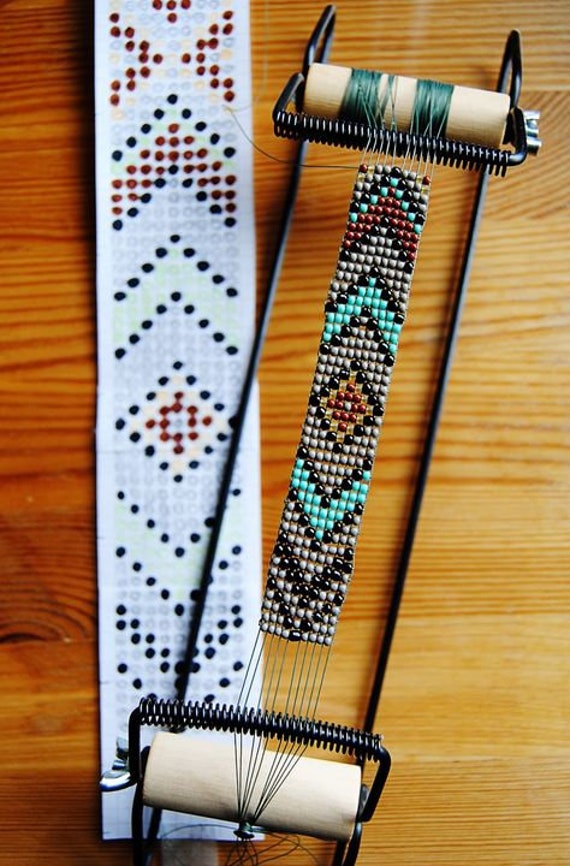
Creative Possibilities with Beading Looms
Jewelry and Accessories
Beading looms open up a world of creative possibilities in the realm of jewelry and accessories. Understanding the potential of loom beadwork enables artisans to explore various designs and styles. Bracelets, necklaces, and earrings are popular projects that showcase the precision and beauty of loom beadwork. These pieces can range from simple, understated designs to elaborate, intricate patterns.
Loom beading allows for precise and consistent designs, making it ideal for creating cohesive sets of jewelry. Matching bracelets, necklaces, and earrings can be crafted to complement each other, providing a complete and polished look. Beyond traditional jewelry, loom beadwork can be used to create accessories such as keychains, hair clips, and decorative bookmarks.
Experimenting with different bead sizes, colors, and patterns enables artisans to craft unique and personalized pieces. Combining loom beadwork with other materials, such as leather or metal, further expands the creative possibilities, resulting in distinctive and stylish accessories. Understanding the creative potential of beading looms in jewelry and accessories highlights their versatility and appeal for creating beautiful, personalized items.
Home Decor and Art
In addition to jewelry and accessories, beading looms offer opportunities for creating stunning home decor and art pieces. Understanding the diverse applications of loom beadwork enables artisans to explore various creative projects. Wall hangings, tapestries, and framed beadwork art can add a touch of elegance and artistry to any living space. These pieces can range from small, intricate designs to large, statement-making artworks.
Loom beadwork allows for precise and detailed patterns, making it ideal for creating visually striking decor items. Artisans can experiment with color palettes, geometric shapes, and abstract designs to create unique art pieces that reflect their style and creativity. Beyond wall art, loom beadwork can be used to embellish household items such as lampshades, cushions, and table runners.
Understanding the potential of beading looms for home decor and art projects reveals their versatility and artistic impact. By exploring various applications and creative techniques, artisans can elevate their living spaces and showcase their beadwork in new and innovative ways.
Conclusion: Embracing the Craft of Beading Looms
Beading looms offer a versatile and rewarding craft that combines creativity, precision, and tradition. Understanding the different types of looms, from simple frame models to advanced electric looms, allows artisans to choose the best tools for their projects. By mastering the setup, warping, weaving, and finishing processes, beaders can create intricate and beautiful designs with confidence and skill.
The creative possibilities with beading looms are endless, encompassing jewelry, accessories, home decor, and art. Whether inspired by traditional patterns or modern trends, loom beading provides a fulfilling outlet for artistic expression and personal growth. By embracing the craft of beading looms, artisans can connect with a rich cultural heritage while exploring contemporary designs and techniques.
In conclusion, beading looms offer a timeless and versatile craft that fosters creativity and precision. By understanding the tools, techniques, and creative potential, artisans can embark on a journey of artistic discovery and create stunning beadwork that stands the test of time. Embracing the world of beading looms provides a fulfilling and enriching experience for crafters of all skill levels.
